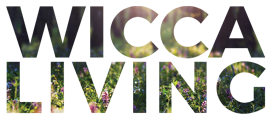When is Imbolc: February 2nd
Imbolc pronunciation: IM-bulk, IM-molg, or imb-OLC
Themes: quickening, hope, renewal, fertility, purification, hearth & home, return of the light
Also known as: Brigid’s Day, Oimelc, Feast of Torches, Feast of Pan, Lupercalia, Snowdrop Festival, Feast of the Waxing Light
The second Sabbat of the Wiccan year celebrates the coming end of Winter and the beginning of the growing cycle in the Northern Hemisphere. The long, cold months are nearly over, and the first stirrings of Spring can be witnessed in the blooming of daffodils and crocuses and the slow emergence of animals from their hibernation. Although snow may continue to cover the ground in many regions, the bleakest part of the cold season is now behind us. This cross-quarter day—midway between the Winter Solstice and the Spring Equinox—is a welcome milestone for many who eagerly await the warmer months. Imbolc, also known in some Pagan traditions as Brighid’s Day, Candlemas, Feast of Torches, and even Groundhog’s Day, is celebrated on February 2nd.
For Wiccans, this Sabbat is a time to give thanks for the growing daylight, as the God is developing and strengthening his power. The Goddess, recovering from giving birth to the God at Yule, is beginning once again to step into her Maiden role. The warmth of the growing Sun begins to cause seeds deep in the Earth to germinate and sprout, and even though much of this activity is taking place deep within the soil, those who are attuned to Nature’s rhythms can feel the quickening pace of life emerging all around them.
As a holiday celebrating beginnings and renewal, Imbolc is often chosen as a time for initiation, whether it be through a coven or through a self-dedication ritual. It is also a time for ritual cleansing after being shut indoors, largely inactive, for the past few months. The ability of the Sun to cleanse and purify is recognized in various ways. Some people light several candles in each room of the house, or, in a more modern version of this tradition, turn on every lamp to set the old energy “ablaze” with the power of light. Some Witches will leave their ritual tools out in direct sunlight as one of their Imbolc traditions to cleanse and charge them—particularly metal tools and treasured crystals or mineral stones.
Traditional candle colors for Imbolc are white, yellow, orange and red, and altar decorations include fresh Spring flowers, besoms (small decorative ritual brooms) and figurines or images of young animals. “Imbolc” is an old Irish word related to the birthing of the first lambs of the season, and is sometimes translated as “ewe’s milk.” Some Witches honor this aspect of the Sabbat by feasting on dishes made with dairy foods including sour cream, milk, butter, cheese and yogurt. Late Winter/ Spring vegetables are also appropriate as Imbolc ritual foods and offerings. Some traditions also include curry and other spicy foods, as these are symbolic of the Sun.
Although many cultures in the pre-Christian world celebrated some type of cross-quarter festival at this time, the one that seems to be most closely aligned with modern Wicca is Brighid’s Day. The Celtic goddess Brighid is considered to be a “triple goddess” of sorts, since the ancient Celts revered her as the goddess of poetry, healing, and smithcraft. These three domains were each central to Celtic life, and Brighid’s major status as a goddess persisted well into Ireland’s Christian era, when she was made into a saint. As a fire goddess (fire being the key transformational ingredient in smithcraft), she was honored with an eternal flame that was tended for centuries by her followers. Many Wiccans, particularly those who follow Celt-inspired traditions, will light a white candle for Brighid and make offerings to her at this Spring Sabbat.




